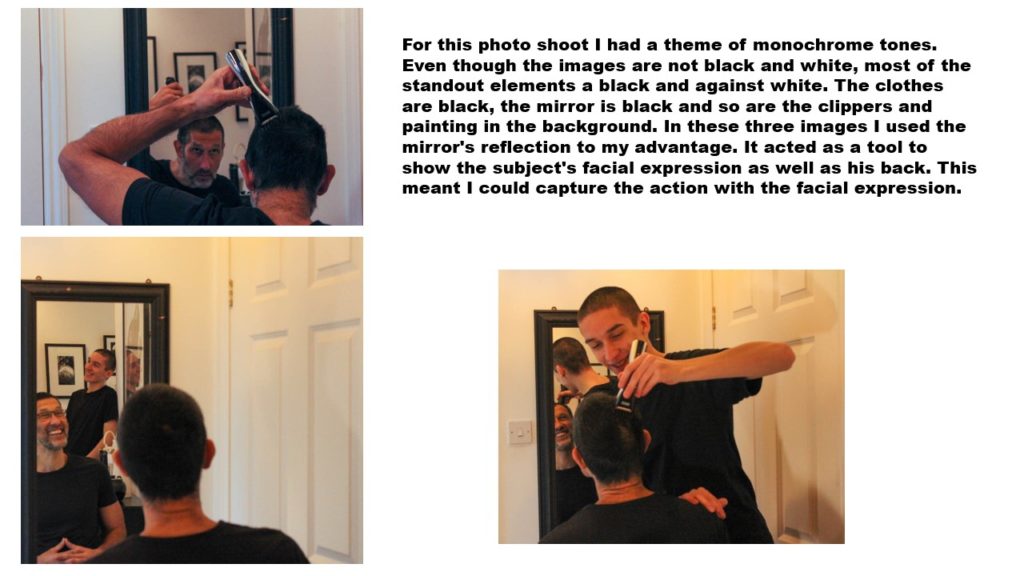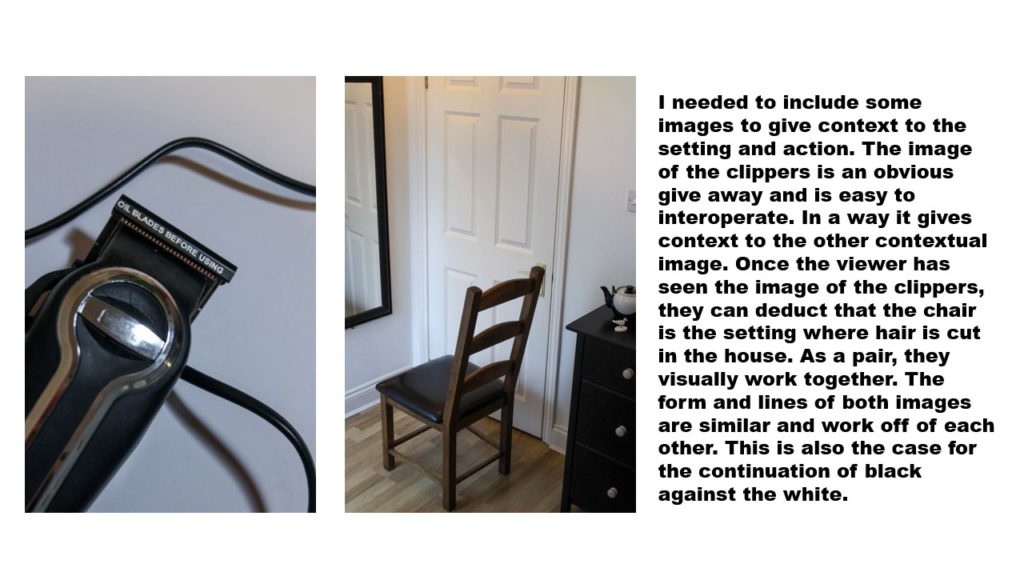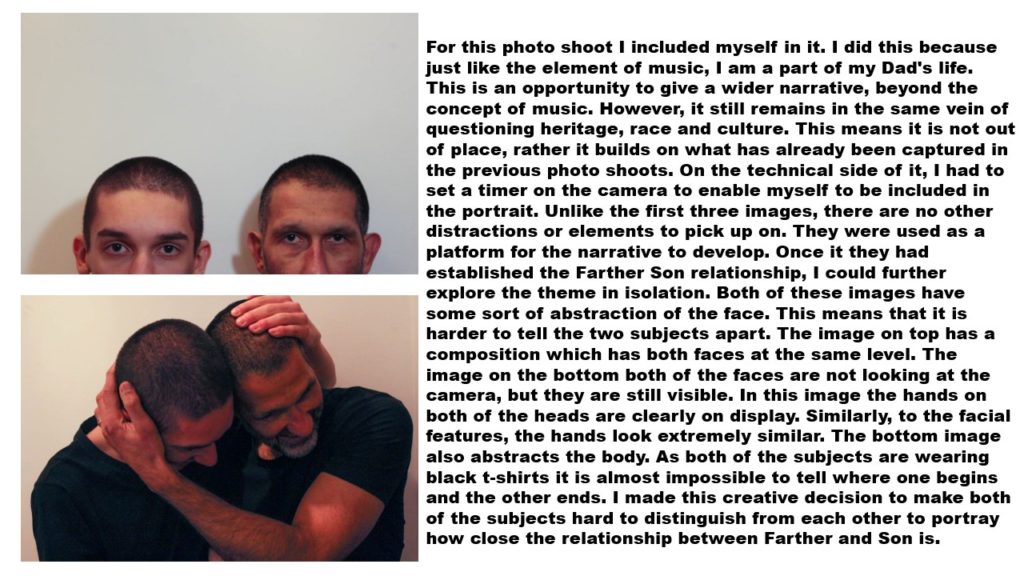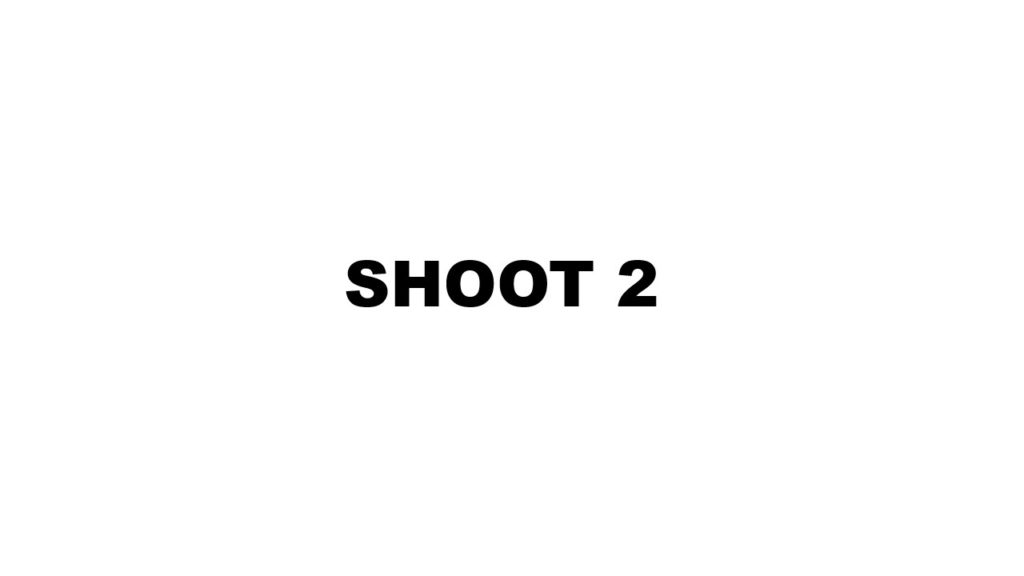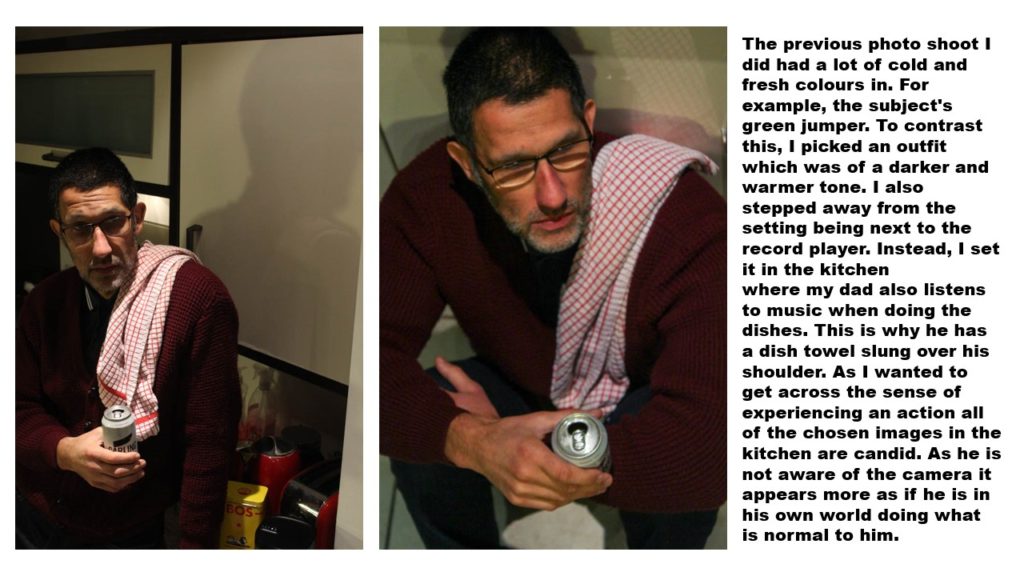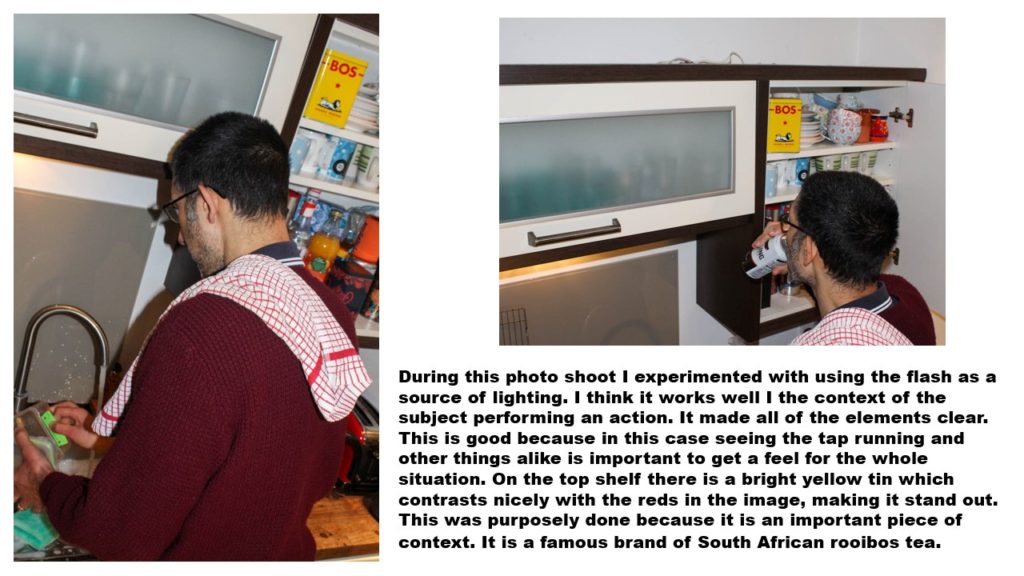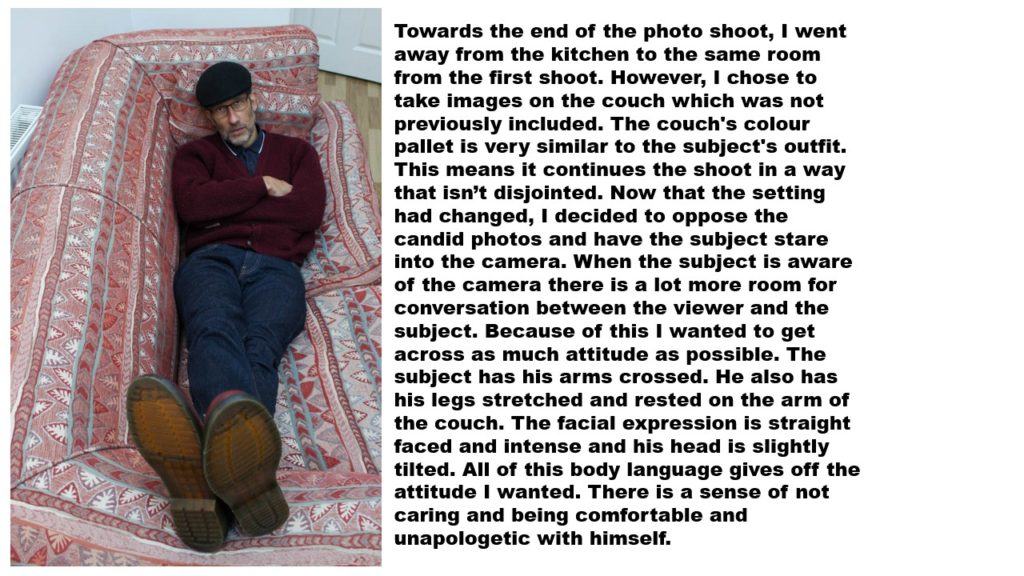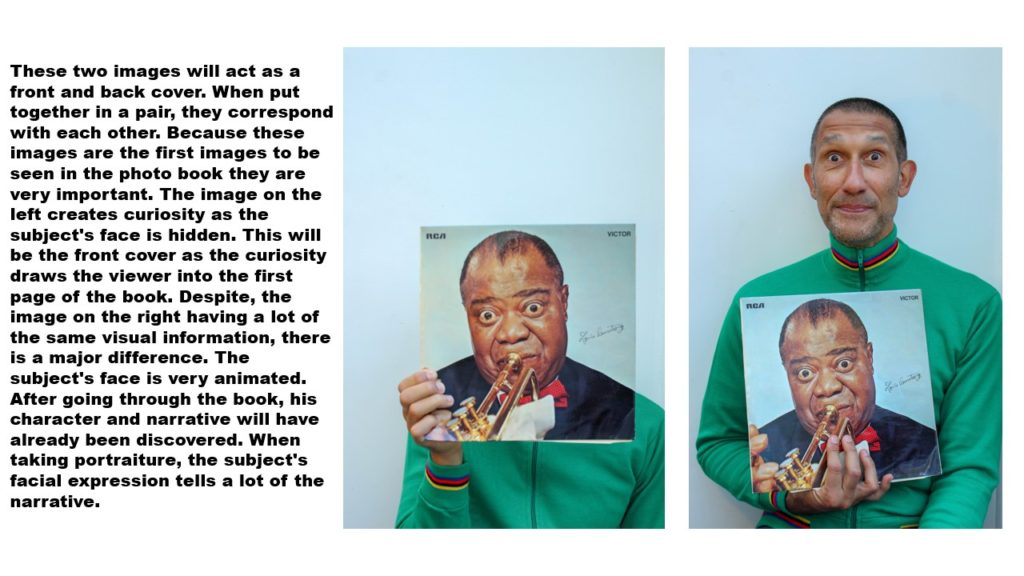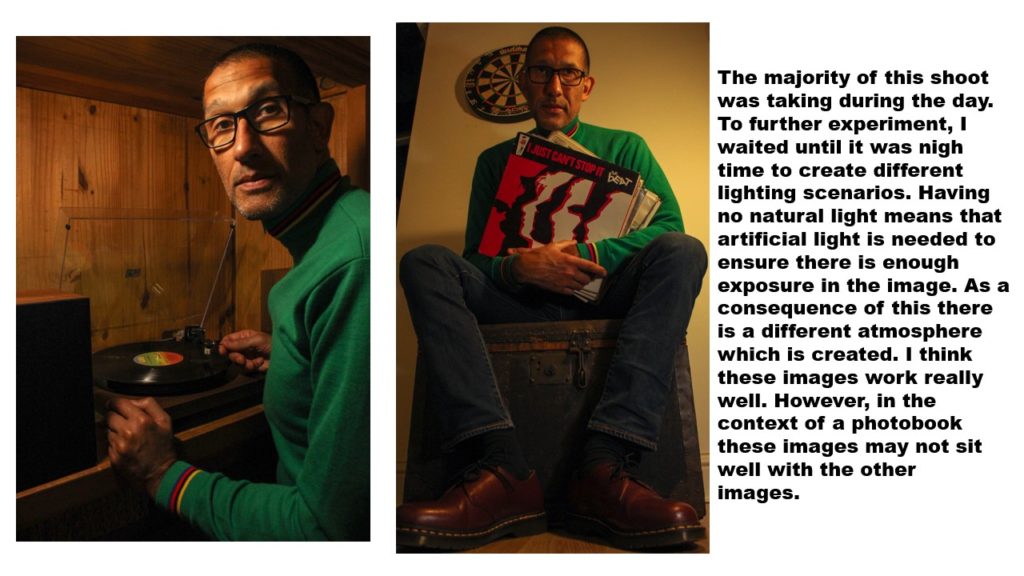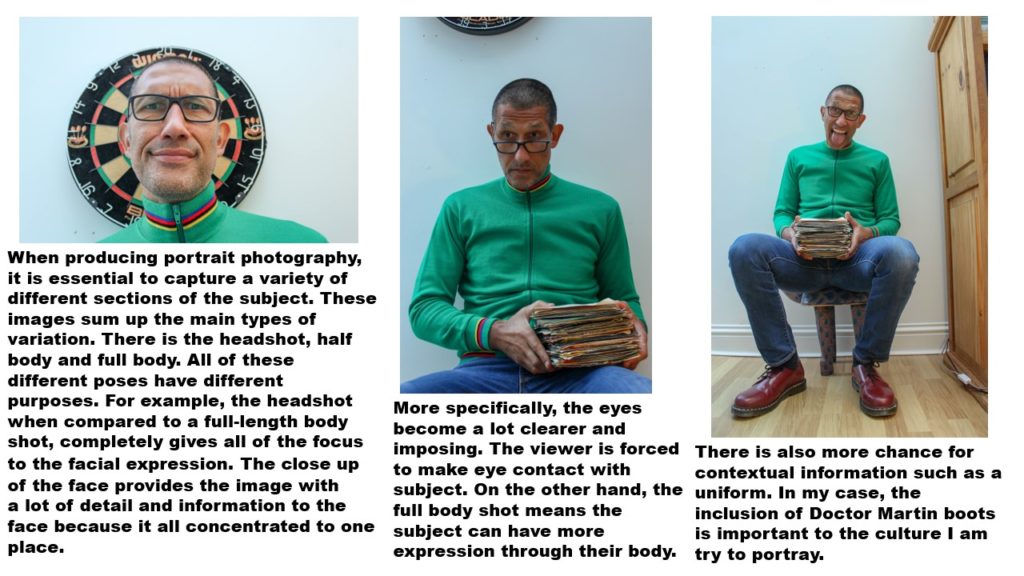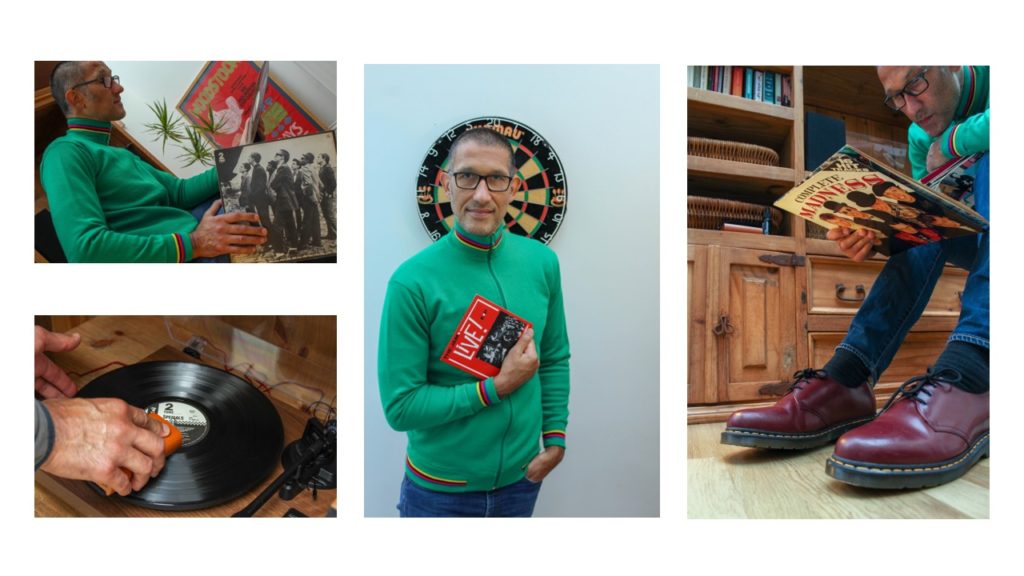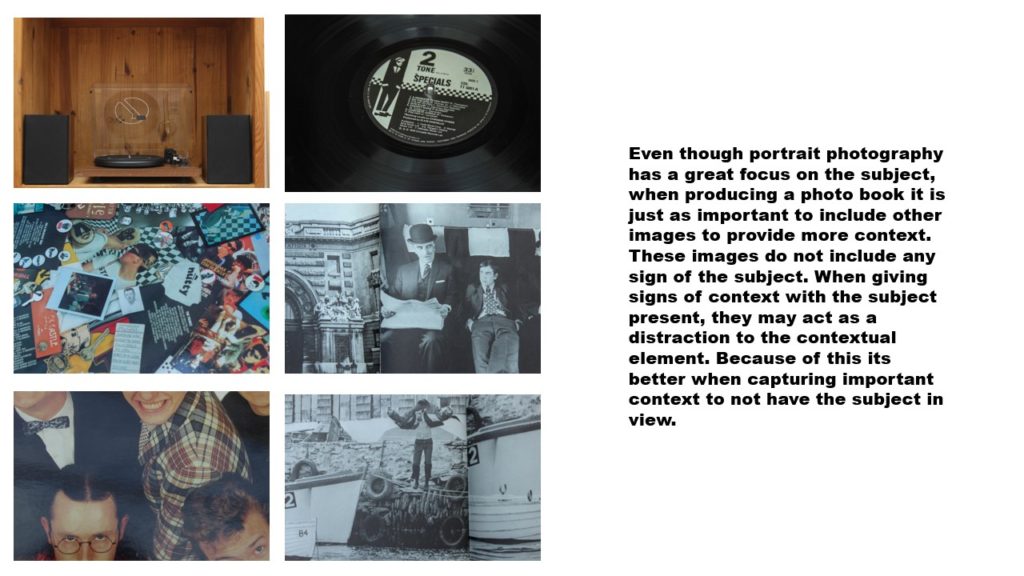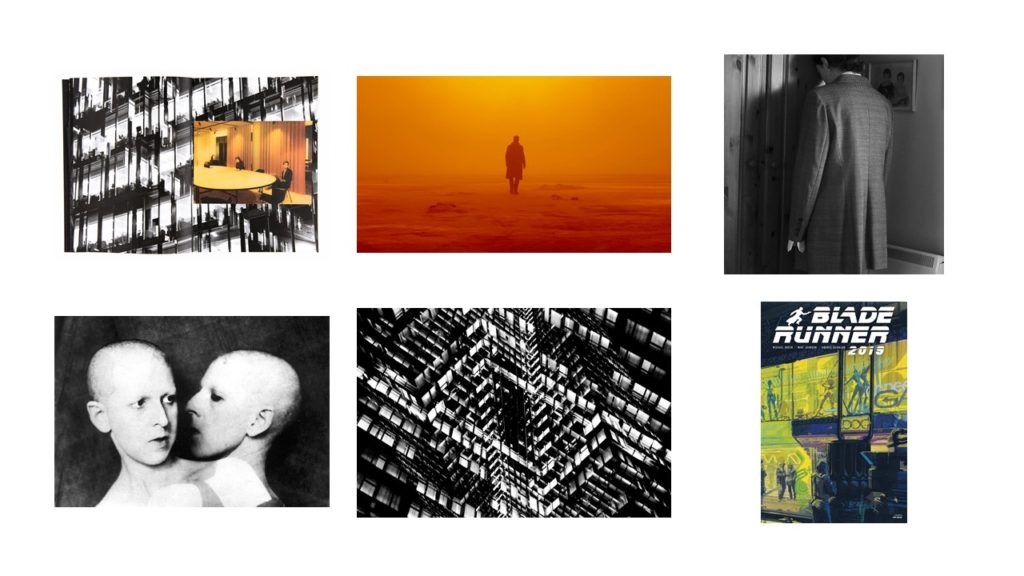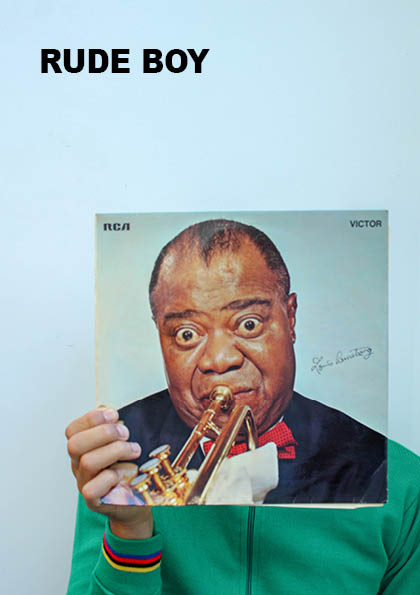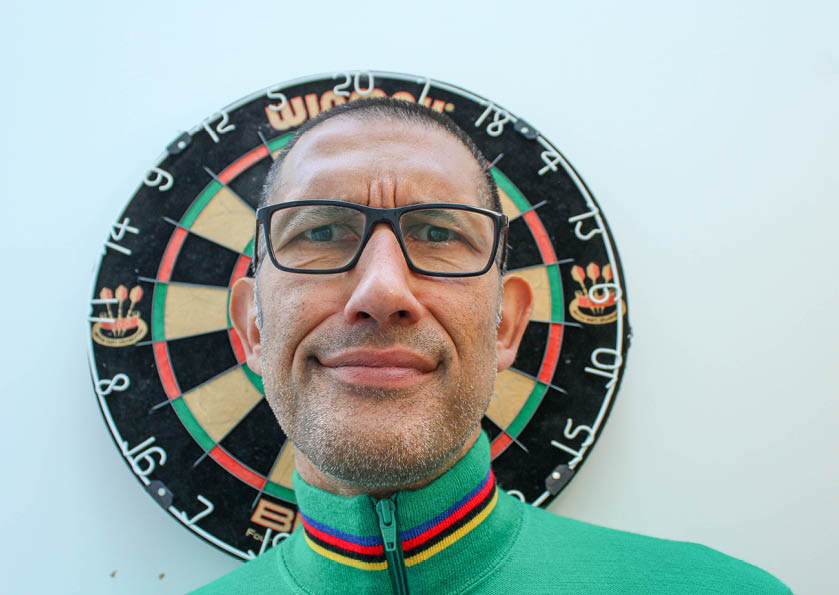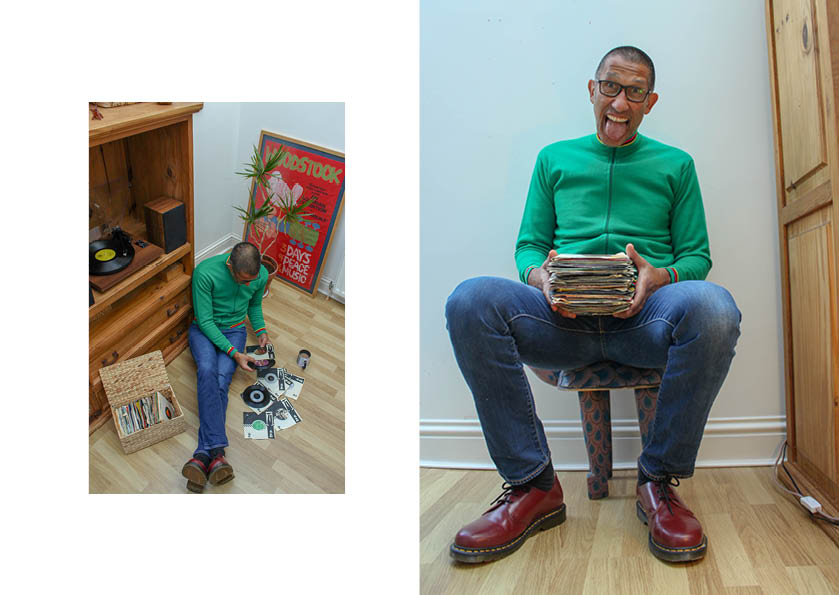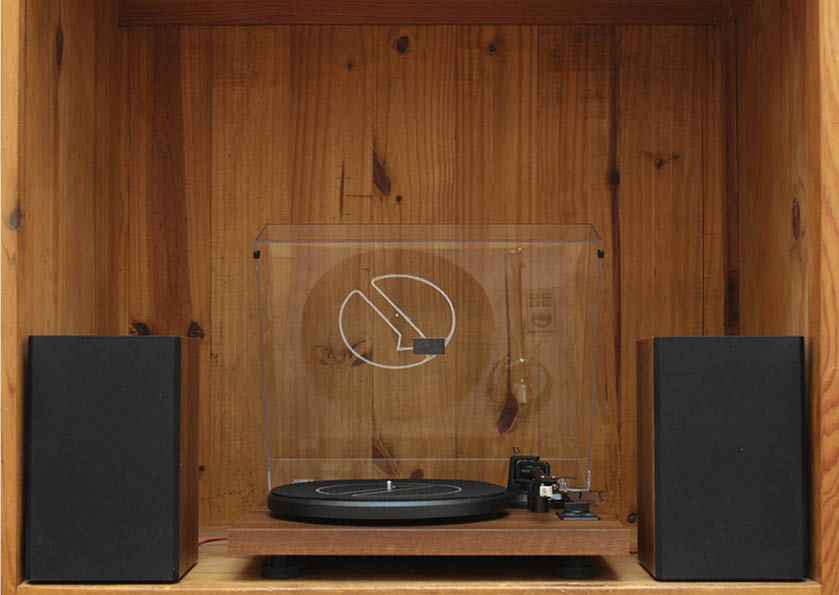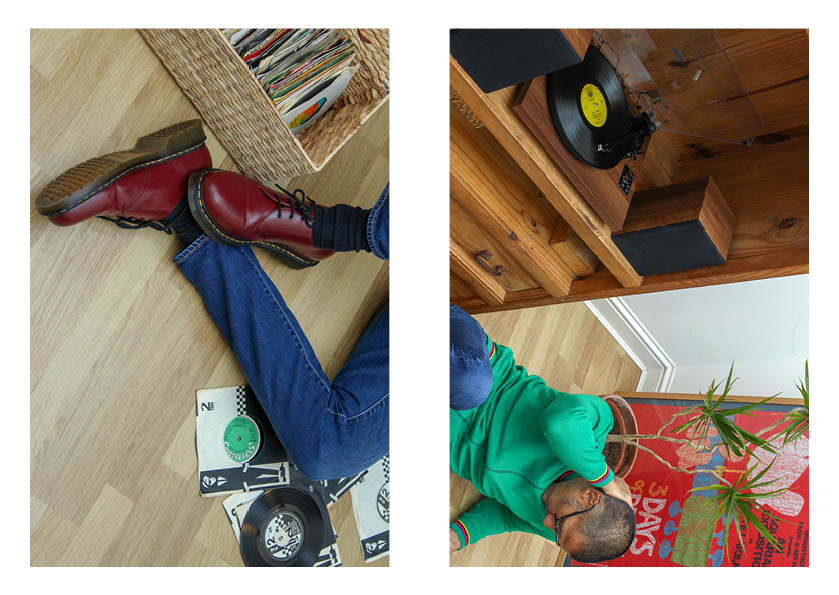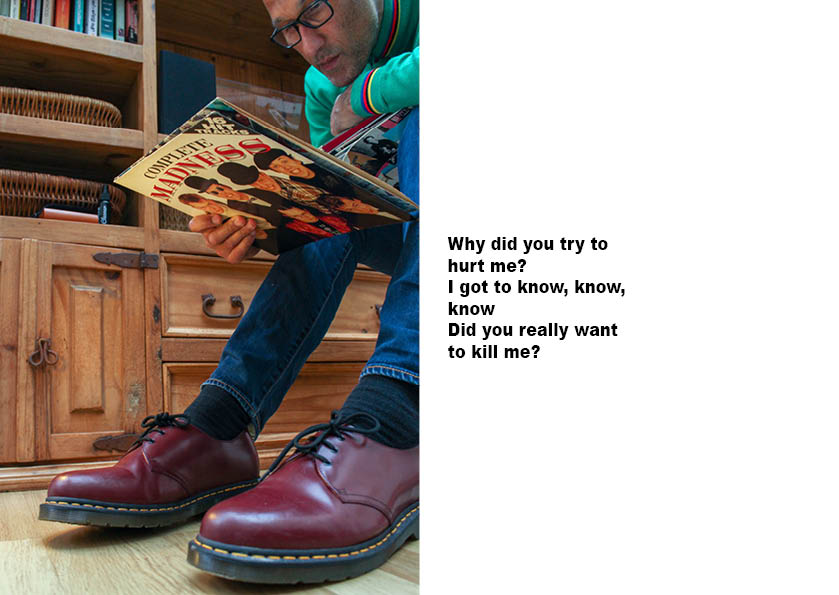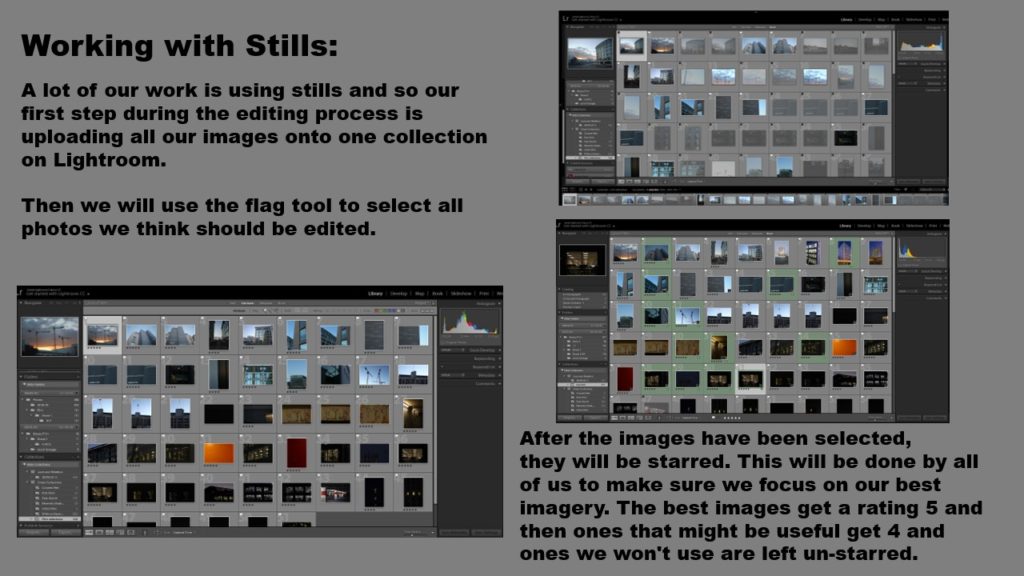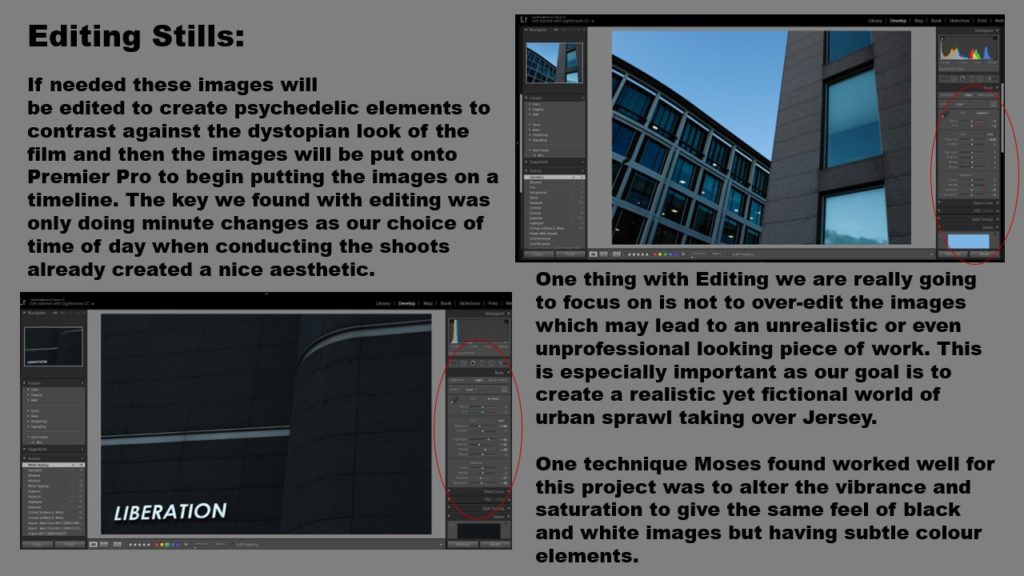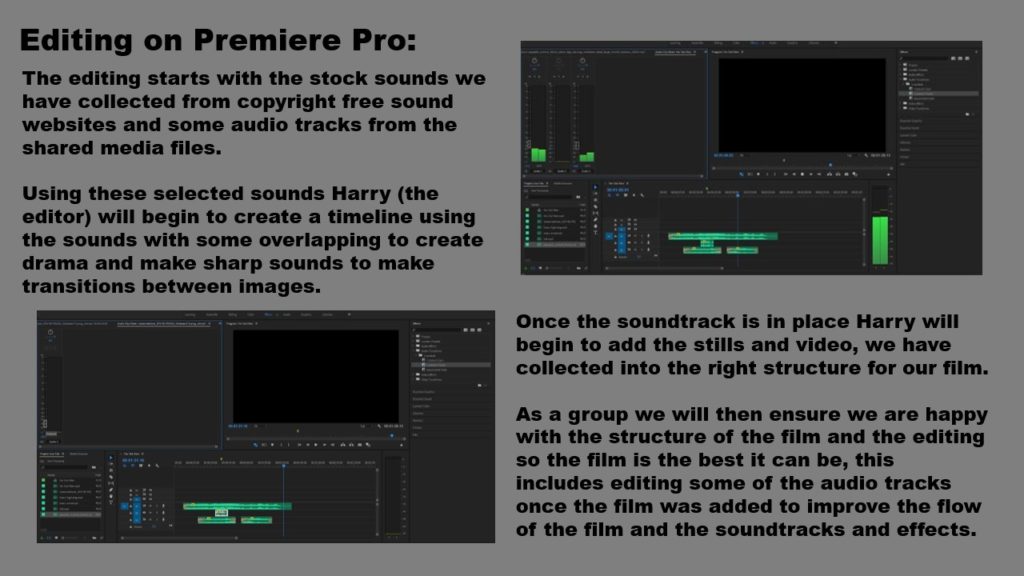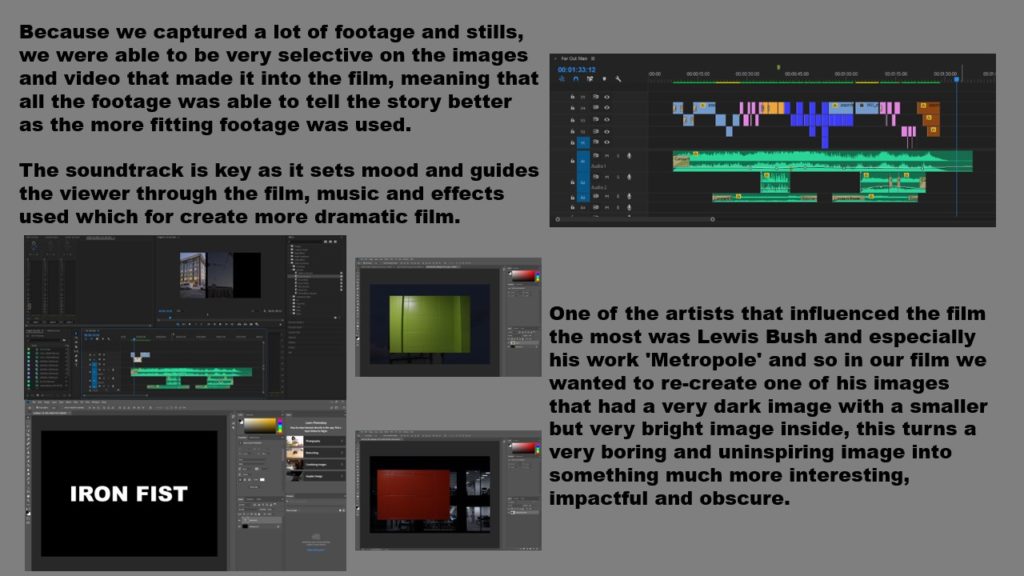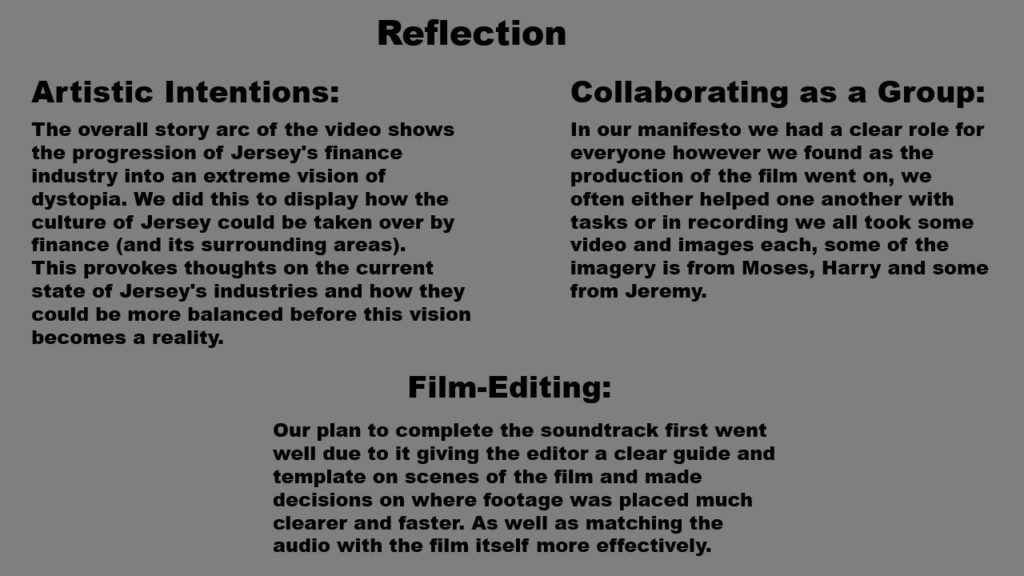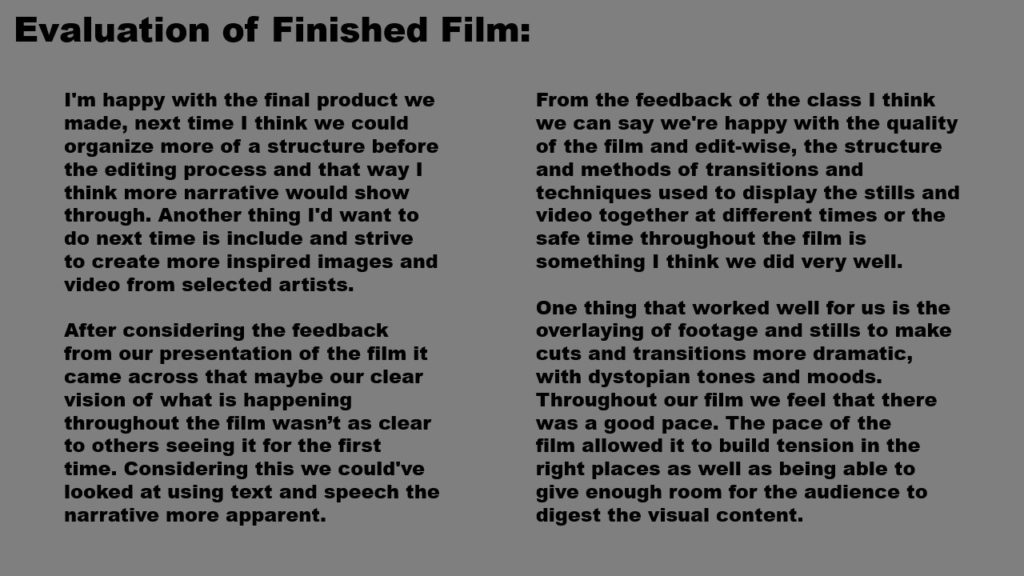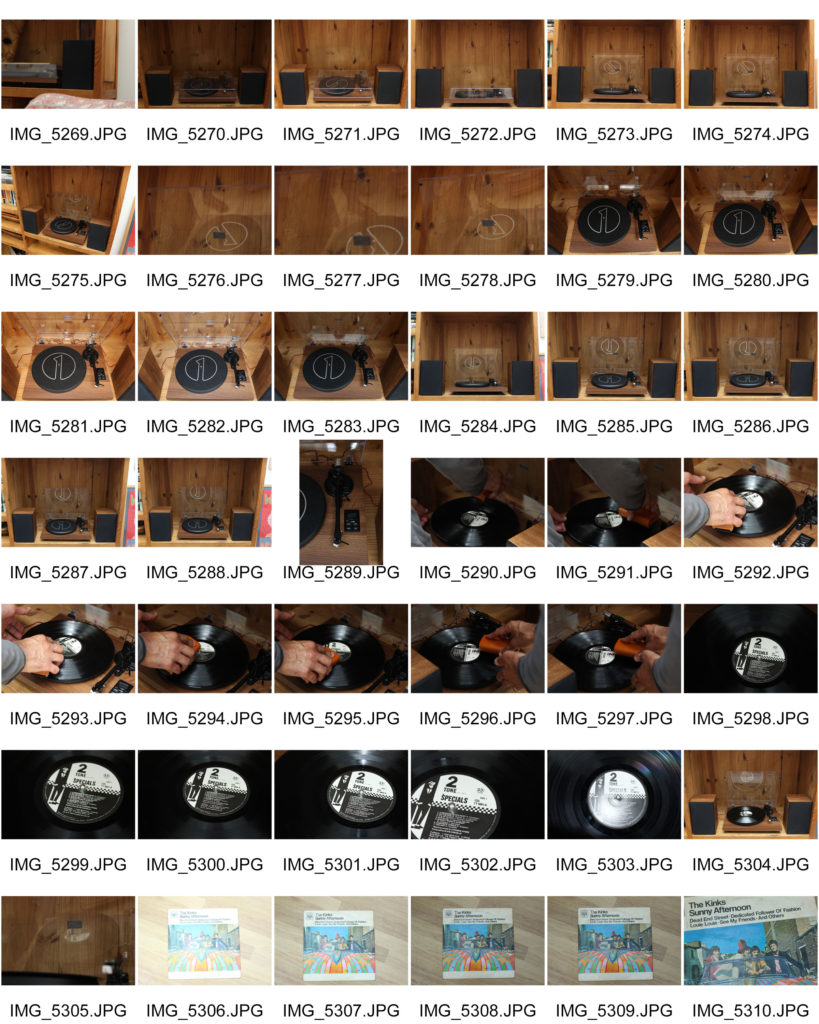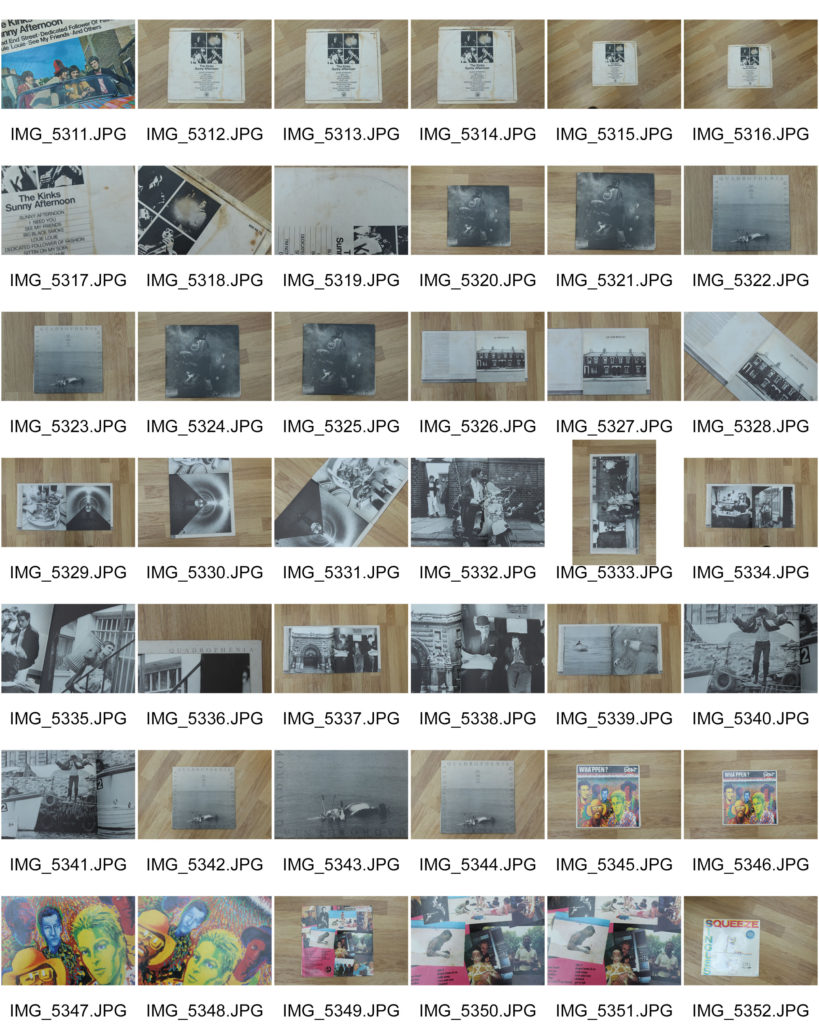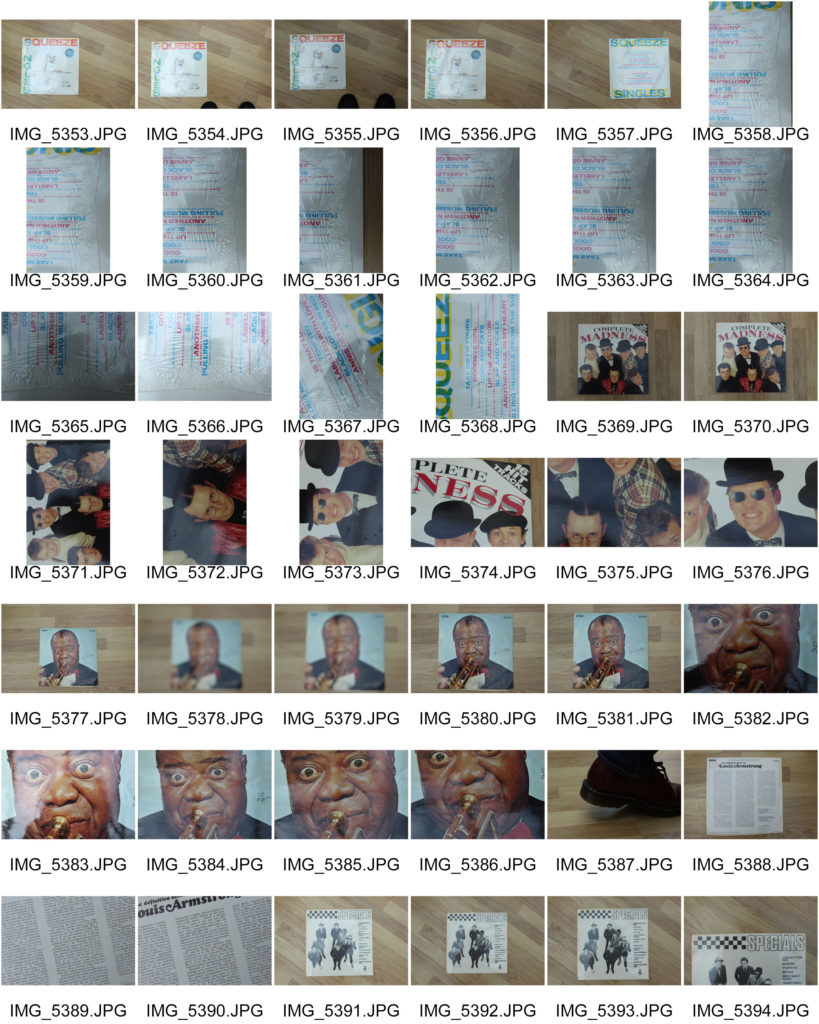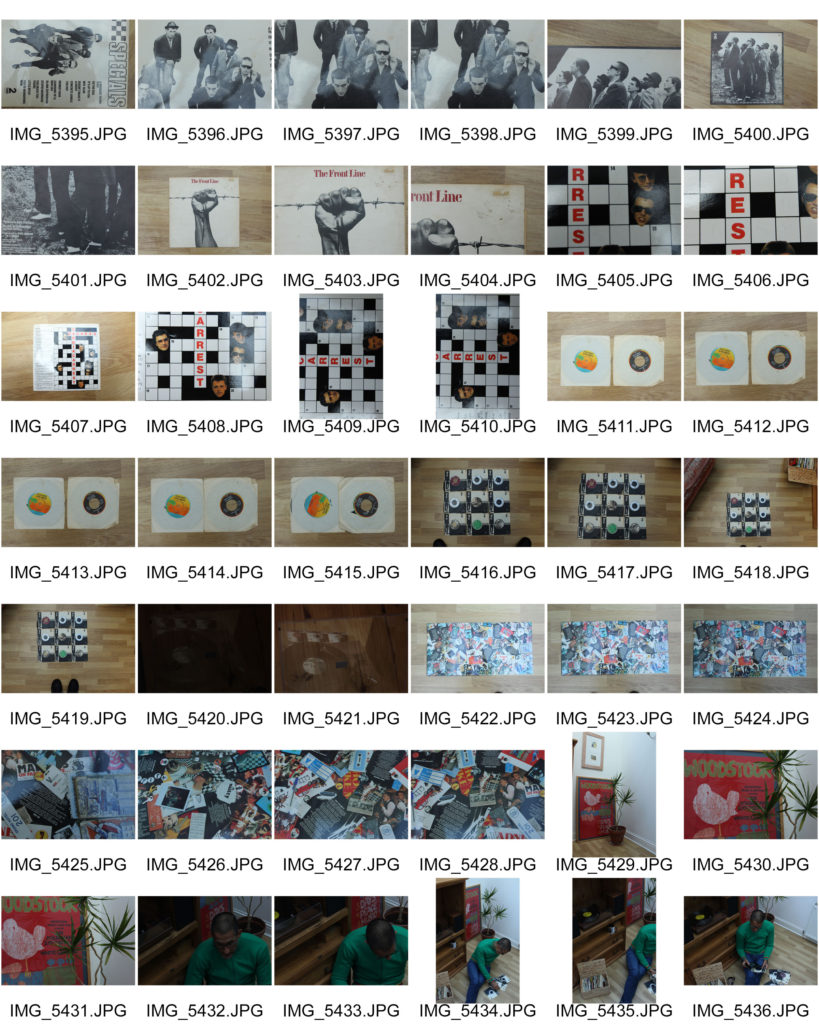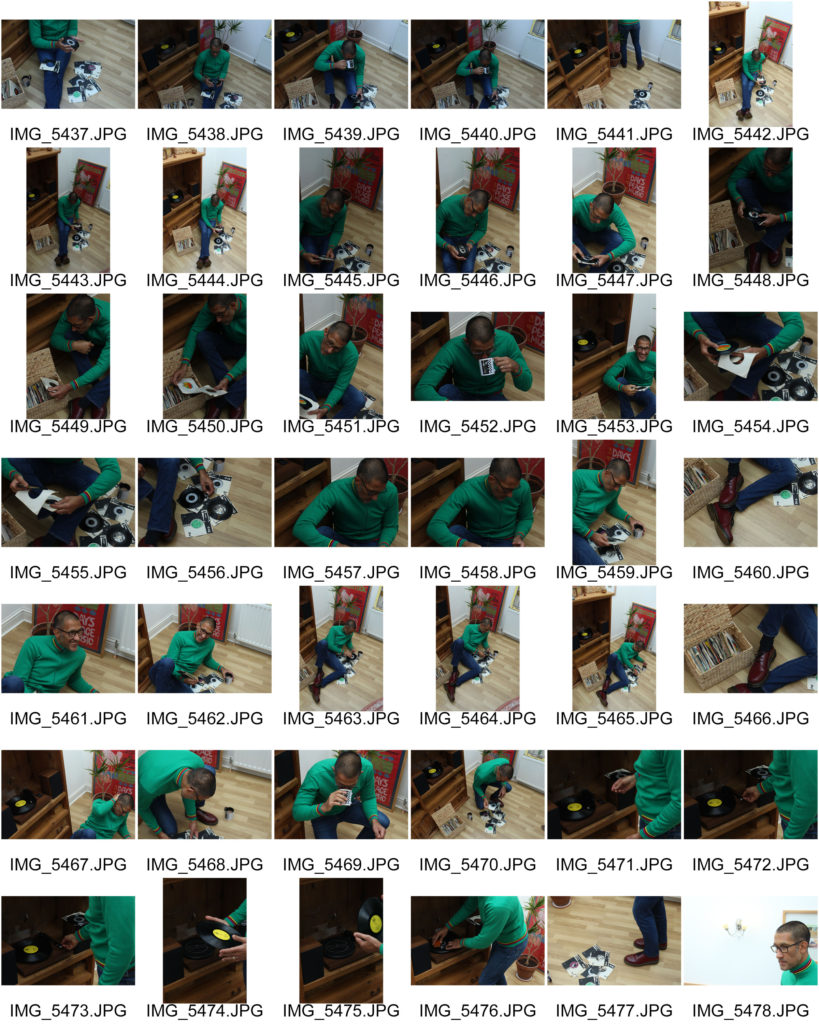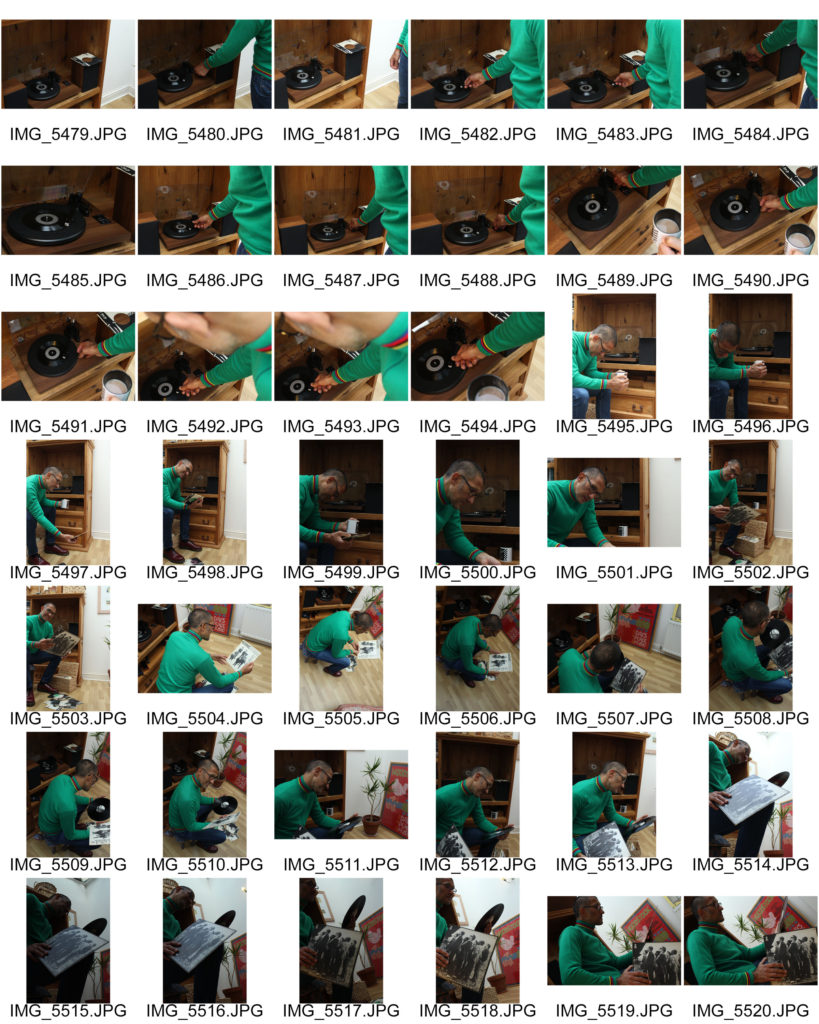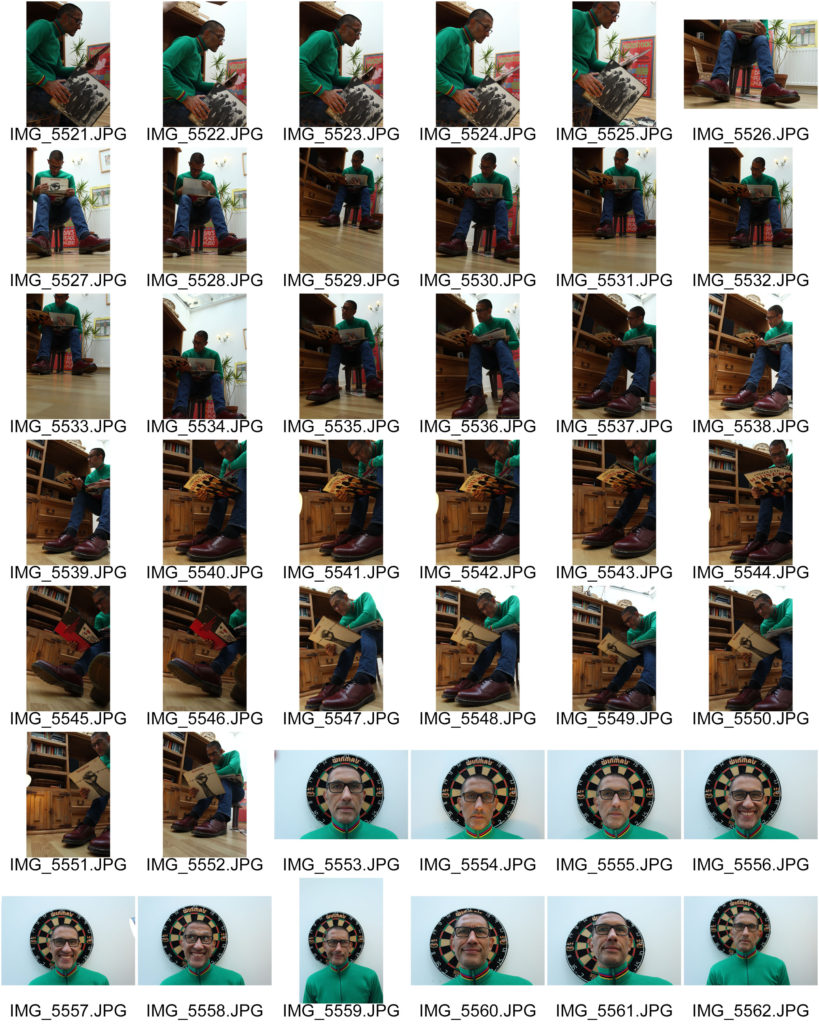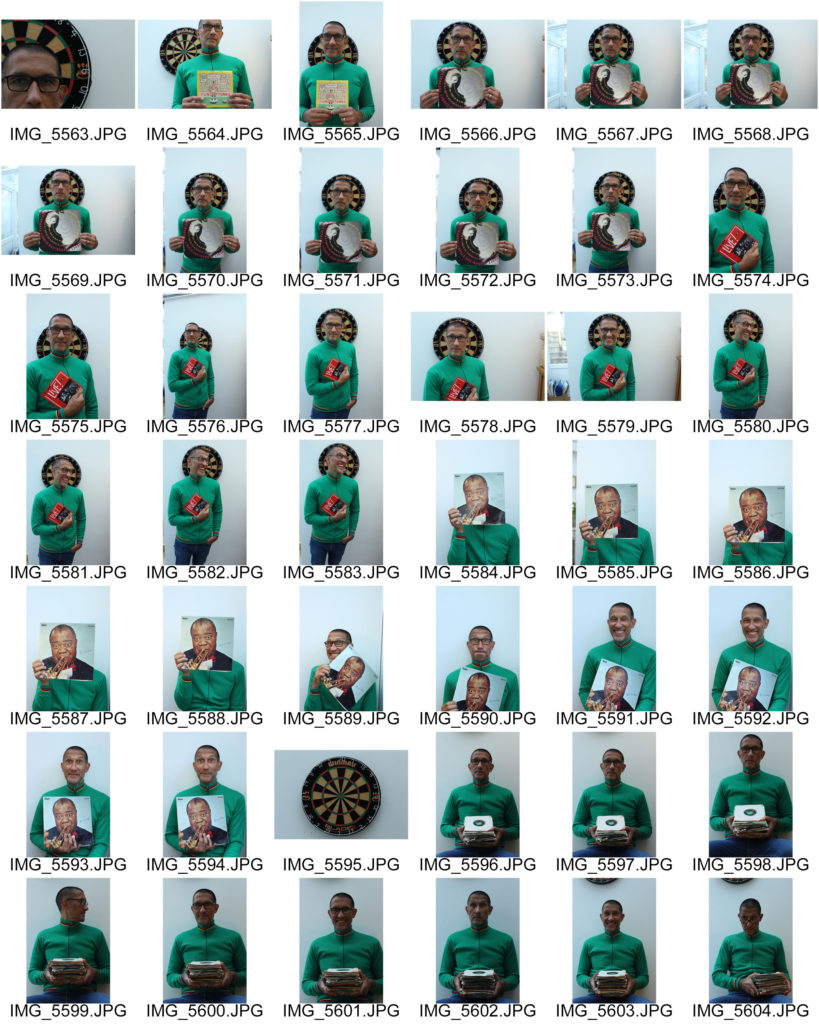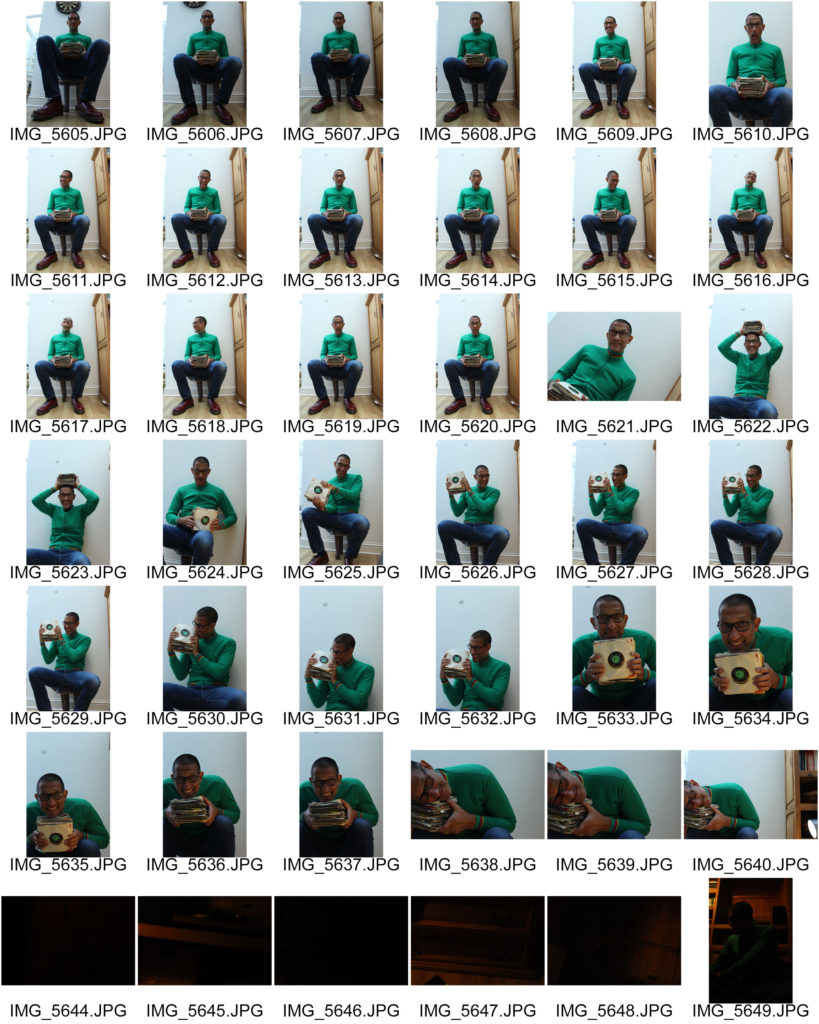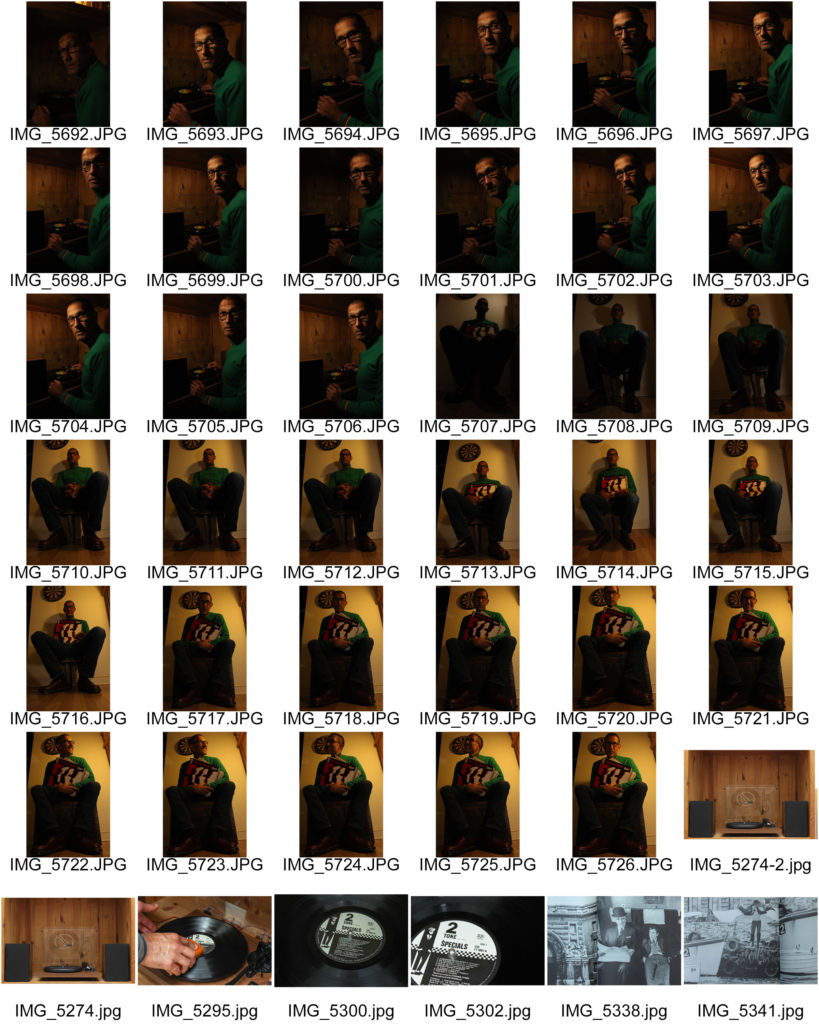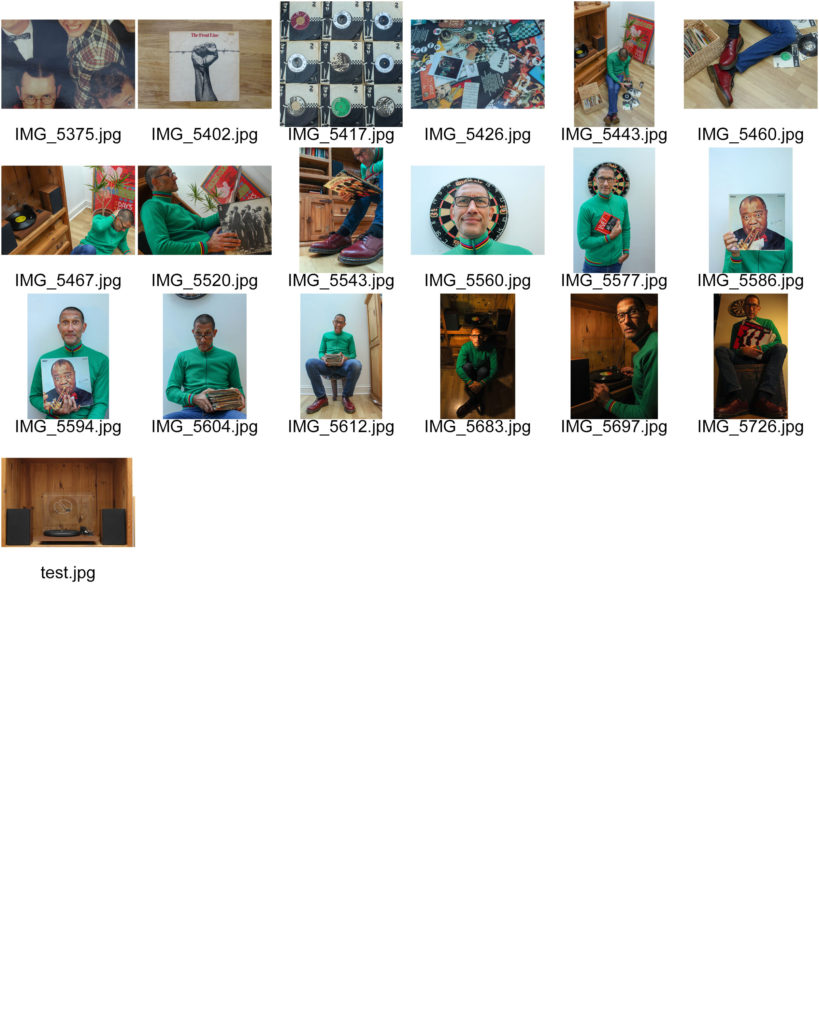In what way have Jim Goldberg and Gerard Mankowitz explored identity, rebellion and youth in their work?
INTRO
I have explored the narrative of my Dad’s music, culture and past experiences. This is done through building on the relationship with me and my Dad with our pasts and influences of our love for music. The subject of music allows me to explore themes such as race and heritage and what cultures we are a part of. It also works as a tool to explain the relationship I have with my Dad, especially as I am the photographer which grants a unique perspective. This idea is further explored through the essay “Inside Out”.
I have shown this narrative through the medium of a photobook. Within the photobook includes a variation of approaches to create a full understanding for the audience. Most importantly, I will include portraits of my Dad. The type of portraits are more tableaux and environmental meaning the subject is conscious of the camera rather than candid. This provides a more conversational feel to the book. An example of tableaux I will use is recreating an album cover for the front and back cover. Within these portraits there will be elements such as fashion and references to music and other elements of cultural significance. As well as portraits I will also include stills of objects, such as images of vinyl. In addition to vinyl I will have other objects that represent the narrative. My final medium will be text. As well as having song lyrics, I will also implement text from interviews that I’ll do with my Dad. The overall atmosphere and feel of the images will be inspired by the music which my Dad is so fond of, (………………..) thus they will be working in parallel.
For this project I am going to study Gerard Mankowitz, Jim Goldberg and significant contextual figures such as Enoch Powell. I am studying Gerard Mankowitz because he has a lot of experience on how to capture the feeling of a music genre through imagery. He also has done album covers and various other music related work such as photography for magazines. Jim Goldberg inspired me to incorporate interviews, interesting text and to photograph meaningful objects which tell a story within their own regard. Goldberg and Mankowitz also has a very close connection to exploring the theme of identity with a mix of slightly different approaches. Enoch Powell will further my project in terms of additional context, for example his “Rivers of Blood” speech. I will also study Nelson Mandela, who is another political figure. However, he has a stronger connection to my Dad’s heritage.
P1
After the second World War, the world was slowly becoming a more globalized place. All the seeds of today’s modern society as we know it were being sewn. However, tension between races were still a major problem. For example during the 50s and 60s the black population were still yet to be able to vote in America amongst many other inequalities. Similarly, In South Africa, apartheid was still in full force. This meant there was a clear separation between the white and black population. In addition the black population was at such a disadvantage within the society and barely treated as actual human beings. This is the world in which my Dad’s mum grew up in. Going to black only schools and not walking on the same side of a road in the presence of a white person. An important note is that marriage between both races were prohibited and illegal. This law greatly impacted my Dad’s mum when she met her soon to be husband from Jersey. Consequently, they had to escape the country so they could marry each other in the neighboring country *****. After this they immigrated to Jersey where my Dad would be born. From the 70s, 80s and 90s my Dad would grow up and witness the world change in relation to race, culture, and his identity. My Dad remembers seeing the news about far-right political groups like the national front in Britain, the imprisonment and election of Nelson Mandela and the abolishment of apartheid. In sense of art and culture, my Dad found himself attached to culture of Ska. Bands like the Specials were some of the first to promote a mixed race, multi-cultural message. They included both black and white members and used titles of albums like “2-tone” with black and white checked graphics. This greatly resonated with him alongside the lyrics. A prominent Specials song with powerful lyrics was “Free Nelson Mandela”. With the post-modernist movement in full effect, it gave the mass population access to this kind of thought provoking art and music. There was a clear collapse of the distinction between high culture and mass culture. In terms of music, postmodernism would be a great influence. Music would change to be non-conforming, almost the opposite of traditional and classical music. These opposing genres would be genres such as rock. No longer was there a focus on harmony and a symphony of many traditional instruments but rather a focus on performer and audience as well as an aspect of randomness. In addition to the philosophy behind music changing, the technology was as well. This progression into more affordable technology gave birth to the democratization of music. Gradually, the number of people that could now produce their own music was increasing thus giving a voice to those who did not have one before. This was especially apparent in black Britain during the time around Thatcherism and racial divides in the 60s, 70s and beyond. This is one of the major catalysts that spurred on genres like ska. This art movement inspired acts like The Specials to explore what was happening during the time through their music. Each release acted as some form of social-political commentary. This allowed my Dad to solidify his identity and where he felt he belonged through these mediums of art, music and other such as certain fashions.
:format(jpeg):mode_rgb():quality(90)/discogs-images/R-2347498-1278604125.jpeg.jpg)
P2
Jim Goldberg’s Raised by Wolves is a great example of how identity and rebellion can be tackled photographically. The project takes a deep documentarian deep dive into the lives of runaway kids in the late 1980’s and early 1990’s. These kids and teenagers were born into to quintessential middle class suburbia in the USA. Despite being given an advantage life with opportunity, they ran away from it, from an easy life. This was possibly in a hope of finding a better life. In the generalized philosophy of the class system in America, people aspire to move up the ladder and try and achieve the so called ‘American dream’. So for these kids at such a young age, being molded to this mentality, to leave and drop down to a lifestyle with no financial security, homelessness and drug problems is quite a statement. Perhaps in the early stages they were blinded by their naivety and blissfully ignorant to the harsh outside world. However, they maintained there lifestyle, rebelling against the normality’s of society. They were so non-conforming that it became near impossible to re-conform to ‘normal’. They were a collective of true outsiders. In Goldberg’s case he was an outsider himself. He quotes “I wanted to look at those people who were outsiders, like I was”. In essence he was an outsider to the outsiders but was an outsider himself. In some convoluted form there was an apparent connection and trust they built between the two parties because of this. This translates to his final outcomes being very intimate and very confronting as there personalities are truly tapped into. This idea of whether the photographer is on the inside or outside of their subject’s circle, and whether there is a difference between the two and if so how does it effect the work. This is especially important regarding Goldberg’s work due to the fact that he needs to convey the subjects identity and their inner private lifestyle. The essay “Inside/Out” written by Abigail Solomon-Godeau explores what position and what relationship the photographer has with their subjects. An important quote from her essay reads: ”On the one hand, we frequently assume authenticity and truth to be located on the inside (the truth of the subject), and, at the same time, we routinely – culturally – locate and define objectivity (as in repertorial, journalistic or juridical objectivity) in conditions of exteriority, of noncomplication.”. This could be extended to the thought that the authentic inside truths could be mislead with bias and that the outside objective truths don’t have the whole access to every part of the truth. This translated into Jim Goldberg’s Raised by Wolves is very interesting. This is because he is somewhat part of the inside collective of youths but not completely, which means he is also an outsider to them. He gained the trust of them and spent a lot of time with the group but did not live their exact lifestyle and other factors such as the age disparity stopped him from becoming completely on the inside. In turn, this allowed Goldberg to strike a balance between both worlds of the inside and out. He was close enough to have privilege when photographing, having access to private situation and sometimes illegal activity. He also had access to photograph personal items. An example of this would be the denim jacket. This furthered access gives the audience a real peer into the lives of these runaway kids. There is a tone of sympathy and engagement throughout his work. Despite this closeness, he was never on the complete same level as his subjects and maintained his role of the photographer, for the most part. The quote: “He provided his subjects with both material assistance and friendship, and even housed Echo’s birth mother for a time when she came out west to help Echo during her pregnancy.”. This is a display of how involved he was and that the lines were blurred between him being on the outside and inside. Did this effect his objectivity, did it inject some form of bias into his work. I believe that when tackling something so intrusive and personal it is imperative for the photographer to possibly sacrifice some objectivity to achieve a comprehensive look into the subjects world. Either way, the audience will have an opinion, a bias, emotions and feeling to the work so it is near impossible for the photographer to achieve both objectivity and closeness as they are just the same human as the audience viewing the work.

P3
Gered Mankowitz’s approach to his career is different to Goldberg’s in the sense that he has taken more of a commercial path, creating imagery for iconic rock acts from the 1960’s onwards. However, the are still some similarities between the two. Throughout Mankowitz’s various pieces of work he has had to capture the essence of who the artist(s) is. The task of capturing someone’s true identity is similar to the work of Goldberg. Not only is it the identity of the person but it is also the identity of the music they make in combination with each other. Mankowitz’s has to have both the person behind the artist and the performer at the face of the artist. Elements such as: lighting, colour or black and white, wardrobe selection, set and setting and any conceptual ideas to further the audience’s understanding of their favorite artist. In a way he is photographing two different people as the same person.
Mankowitz’s has to build a relationship to not only the artist but also the person. Over the many years of photographing the Rolling Stones, he gradually gained the trust from the group which resulted in him being able to try out more conceptual ideas. For example, his experimentation with the lens and Vaseline. He would smear the Vaseline onto the lens to create a smeared effect. This would end up creating one of his most iconic photos, the album cover of Between the Buttons. In an interview Mankowitz’s said: “Between the Buttons was a little different because by 1966 I had achieved a closeness to the band and to Andrew that allowed me the freedom to feel that I could actually contribute something to the group’s image, and in that sense, it was a concept cover.” He was finally on the inside and as a result could produce his best work. Becoming closer to the Stones, Mankowitz’s would spend whole nights in the recording studio with them, therefore educating himself in their sound before it was released. This allowed him to provide a concept that complemented the music on the album Between the Buttons. From visuals to sonics. This is where the distinction between Mankowitz’s and Goldberg lies. Mankowitz’s used his photographic techniques to translate imagery into the sound the acts were making at the time. The style of image my change based on which genre the artist represents. Is there music confronting and in your face? Then it may be best to have the subject staring directly at the camera, into the viewer’s eyes. To further analyze Between the Buttons cover, the smeared and distorted visuals of the countryside around them translates the energy they have in their music. This energy is accompanied with being at the for front of rock likewise the photo being new and experimental. When applying this thought process to Ska, there is also a similar energy. It has its times where it is lively and jumpy, but also has its songs like “Ghost Town” which provides a more dark, slow, and considered atmosphere.

P4
My personal photographic response draws inspiration from both Goldberg and Mankowitz’s. It aims to define my Dad’s identity through the study of his cultural influences which have been molded due to his heritage and up-bringing. Within my images I have items that nod to this narrative. This was inspired by Goldberg’s approach of including images of objects that describe the subject’s identity, For example, in the image of my Dad doing the dishes, in the background there is a tin of Bos, a South African brand of rooibos tea. Also, in many of the photos he is wearing Doc Martin boots which was a staple of ska and rude boy culture. Not only is the items and clothing part of building the narrative but also the actions and poses. In the collages of my Dad dancing, they are in direct reference to the dance styles that were popular within the music he used to listen to and still does. This has been motivated by Mankowitz’s ability to link the person to the music through the imagery. The experimental nature of the blurred effect was also inspired by Mankowitz’s as it pushes the boundaries of what a photo should be in the name of trying to accomplish the feeling and essence of a particular music. Furthermore, the close relationship with my Dad gave me a head start as I already had an insight into his identity and was already confident to try out different ideas. In reference to Abigail Solomon-Godeau’s essay Inside/Out, my “engagement, participation and privileged knowledge.” Meant that my role as the photographer in the project was much more involved and apparent. My thoughts, feelings and knowledge of my Dad come through each of the images and to the extent that I appear in some of the images. In the overall composition of the photobook, there is the narrative of putting on a piece of vinyl and listening it and the experience that comes with it. Looking through the album which is playing, dancing, reminiscing and doing tasks such as the dishes. Even though this carries the viewer through the book, it is only a platform and structure to support the more conceptual side of the project being about my Dad’s identity, culture and heritage .





